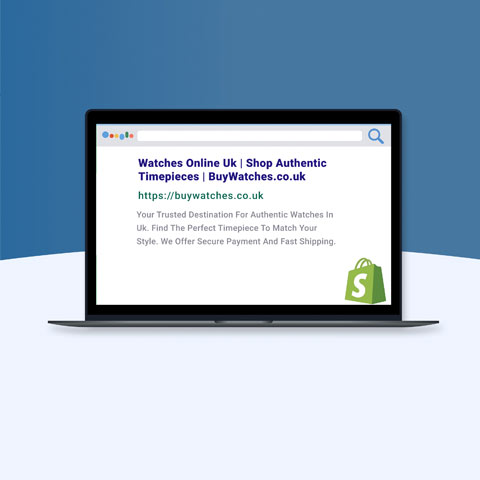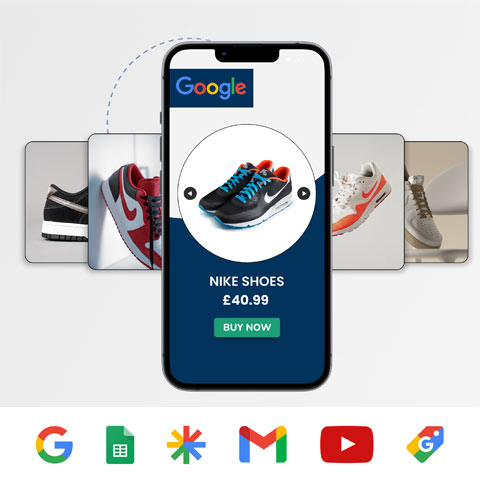E-Commerce Analytics: How To Leverage Data To Drive Sales


E-Commerce is constantly evolving, from how websites engage with customers to how data is collected to increase sales, thus creating a better user experience. Analytics is at the forefront of these changes, providing valuable metrics that can help optimize e-commerce websites to achieve better results. In this article, we will discuss how to leverage the data provided by e-commerce analytics so it can drive sales and increase performance.
What Is E-Commerce Analytics?
E-Commerce analytics involves collecting data on how users interact with an online store. This helps store owners determine customer behaviors and expected trends and identify areas that aren’t performing as well as they should.
We can improve the overall user experience and increase sales using data tracking.
E-Commerce analytics provide a range of metrics that detail the whole user journey, from how users initially discover your store to sales conversions and customer retention.
We will talk more about metrics later in the article.
Why Is E-Commerce Analytics So Important?
The e-commerce market is continuing to grow at a rapid rate.
According to a report from eMarketer, e-commerce sales are expected to surpass 7 trillion dollars in the next three years.
 Source: eMarketer
Source: eMarketer
To help manage this growth, the e-commerce industry needs to gain a detailed understanding of consumers so it can adapt to behaviors and give customers what they want.
Measuring how customers interact with an online store with analytics can help improve decision-making from a business perspective so that we can develop informed and structured strategies.
Not only this, but e-commerce analytics can also help to improve the Business-to-Customer (B2C) relationship to increase retention rates and deliver a great experience.
The industry cannot continue to grow and improve without analytics.
What Metrics Are Shown by E-Commerce Analytics Software?
Let’s look at five valuable e-commerce metrics to understand how user activity can be measured and how this data can improve your business:
1. Customer Lifetime Value (CLV)
The Customer Lifetime Value metric looks beyond individual sales and provides data about the bigger picture.
By multiplying the average order value of a user with their purchase frequency rate and the average customer lifespan, it is possible to determine how much a customer is worth over a long period.
2. Customer Retention Rate (CRR)
The customer retention rate helps to shine a light on whether you have a happy customer base and the overall loyalty of your customers.
If your CRR rate is falling below the goals set out in your marketing strategy, then this suggests something is wrong, and customer satisfaction is low.
3. Shopping Cart Abandonment Rate
A customer abandoning their shopping cart is likely due to a poor checkout process, a technical issue, or an unexpected cost, such as a high shipping fee. A high abandonment rate needs to be rectified as soon as possible.
 Source: Baymard Institute
Source: Baymard Institute4. Customer Acquisition Cost (CAC)
This metric is calculated by dividing the total sales of your e-commerce store by your full marketing spend. In the early days of your store, this metric was probably high as you looked to establish yourself in the market.
If this figure remains high or increases, it indicates something wrong, whether a poor user experience or an issue with your products.
5. Bounce Rate
This is when a user leaves your website after only viewing one page. Like the shopping cart abandonment rate metric, a high bounce rate suggests that customers find your website unusable or the content is of no interest to them.
Slow loading times, bad navigation, or misleading content could all be reasons for a higher-than-average bounce rate.
E-Commerce Websites, in particular, have turned to AI writers to help create engaging product descriptions and pages. This is an effective solution for websites that sell thousands of products and need optimized and unique content for each, which is not viable to do manually.
How To Leverage Data To Drive Sales With E-Commerce Analytics
We have established what E-Commerce Analytics is and have looked at some key metrics.
Now, let’s discuss how to leverage data to drive sales with E-Commerce Analytics, focusing on six key areas.
#1 Improve Your Customer Experience
If your e-commerce store is to be successful and achieve high search engine rankings, then the user experience (UX) must be flawless. Strong UX ensures that engagement is high and bounce rates are lower, resulting in frequent conversions.
Improving customer retention rate and customer satisfaction is the fundamental goal for most organizations.
Below are the primary objectives for launching a customer experience strategy.
 Source: Ascend2
Source: Ascend2Many e-commerce websites can be notoriously tricky to navigate, which is why a metric such as the bounce rate can identify pages that need improvement.
Likewise, a high shopping cart abandonment rate suggests that the checkout process also needs attention. This type of data can highlight problem areas, help you make the changes, and hopefully increase conversion rates.
#2 Develop Your Product Offering
Customers can be overwhelmed with the amount of choice that is now available online. Luckily, accurate data can ensure your product offering is the best.
Your store must strike the perfect balance between product quality, price, and delivery speed. This can be achieved with a thorough analysis of user behaviors and successful conversions.
Developing your product offering to cater to the needs of your target audience must be a constant consideration.
#3 Better Manage Your Inventory
Data can assist you in managing your inventory more smartly, helping you keep track of your current stock and predict when supply needs re-ordering before it sells out.
This can help avoid lengthy waiting times to replenish products, meaning you do not miss out on sales because of a lack of availability. You can also use data to determine which stock is less popular.
#4 Personalized Selling and Upselling
Make the most of loyal, returning customers who spend money consistently with up-and-cross-selling.
Personalized recommendations are one of the best ways to drive sales, whether these are recommendations on the website itself or ones sent by email to encourage returning customers. Widgets can recommend products in various ways, such as displaying similar products in high demand.
#5 Smarter Ad Campaigns
Collecting data on your ad campaigns enables you to be more intelligent when launching targeted ad campaigns in the future. Advertising and marketing are essential components of any e-commerce store but can come at significant expense.
By using analytics during your marketing audits, you can assess what works and what doesn’t, helping you allocate your budget more effectively.
#6 Effective Reporting
With effective reporting, you can share your reports and findings with the relevant people to help them make critical decisions regarding the future of the business.
Clear and relevant data is vital to help understand what needs to be done to improve your online store to attract customers and generate more sales.
With automated reporting, you can export regular reports that provide all the information you need to analyze performance.
Conclusion
Access to analytics is the future of e-commerce if online stores adapt to changing trends and behaviors. It is impossible to adjust accordingly without valuable insights into customer acquisition, how they interact with your store, and why they complete a sale or exit.
Not only can analytics increase sales, but they can also protect your budget, helping you better manage your inventory and ad spend while improving your product offering to keep your customer base happy.
If your E-Commerce business fails to leverage data with analytics, it will likely be left behind in the coming years, if not months!
Want more like this?
Want more like this?
Insight delivered to your inbox
Keep up to date with our free email. Hand picked whitepapers and posts from our blog, as well as exclusive videos and webinar invitations keep our Users one step ahead.
By clicking 'SIGN UP', you agree to our Terms of Use and Privacy Policy


By clicking 'SIGN UP', you agree to our Terms of Use and Privacy Policy
Other content you may be interested in
Categories
Categories

Want more like this?


Want more like this?
Insight delivered to your inbox
Keep up to date with our free email. Hand picked whitepapers and posts from our blog, as well as exclusive videos and webinar invitations keep our Users one step ahead.
By clicking 'SIGN UP', you agree to our Terms of Use and Privacy Policy





![[Research] Apps: The Secret Engine of Ecommerce Growth [Research] Apps: The Secret Engine of Ecommerce Growth](https://images.bizibl.com/sites/default/files/apps-and-web-similarweb-480.jpg)



